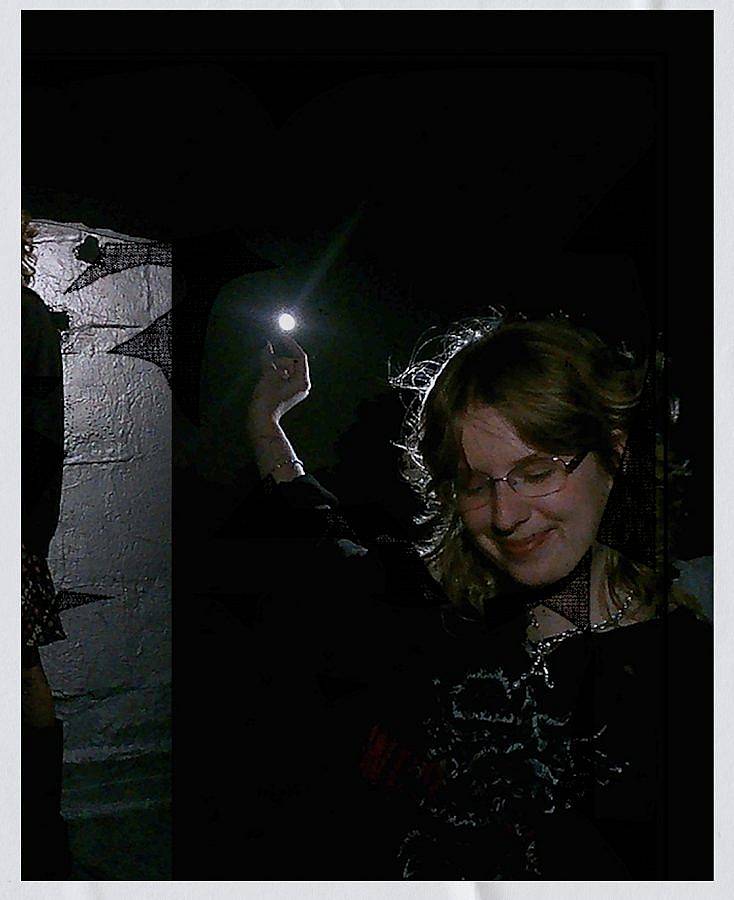Tell us a little bit about yourself and what you do.
I was born in Atlanta, but spent six non sequitur years in Utah growing up. I went to school in Baltimore and found I wasn’t great with painting, but had bottomless patience for making tiny hatch-lines, so while I work in a lot of mediums, my true love is printmaking – primarily etching. I’ve been in New York for about two years now, and have worked as a props assistant, and as a companion for elderly adults, but I really moved here seeking a new rhythm, generally and creatively.
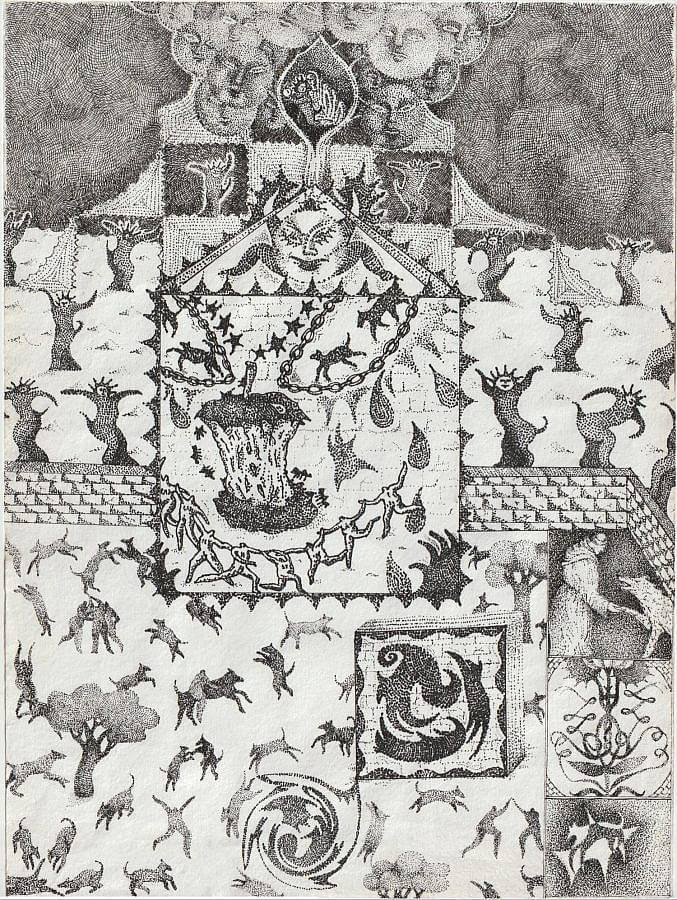
What catalyzed your interest in art?
Trying to trace it back, probably the way my sister and I played as kids. We built out these really involved fantasy worlds. There was usually some tangible element to them, but for the most part they were entirely in our heads, with ongoing storylines and lore. There was a magic in play that I’m mining for when I make work now— pulling things from my surroundings or emotions to build up a visual narrative, like reassembling and reinterpreting the world around me until an alternate reality takes shape. It’s kind of like building a house and you keep adding on rooms – I don’t always know where it’s headed, or its final form, until it has settled upon itself. In terms of direct influence, both of my maternal grandparents are artists, so that played a significant role. Throughout my childhood, there was a positivity around self-expression and creativity that I’m very grateful for.
What are the main motifs in the art you make?
A lot of religious iconography has worked its way into my visual vocabulary. Although my great-grandfather was a minister, I didn’t grow up particularly religious. I remember drawing on the backs of pew cards when I was really little, and I was teased because I’d just draw people with huge boobs. So clearly, there’s always been a focus on figure. The older I got, the more I integrated the figures into an environment. I became more focused on the world the figures were existing in and how they move through it. The isolated figure now has a few friends and a room with a door, but a door that leads to where? And so the world keeps growing. It’s more exciting if it grows in unpredictable ways, so I use familiar objects in unfamiliar arrangements. The worlds are intended to be autonomous, existing parallel to but independently from our own.
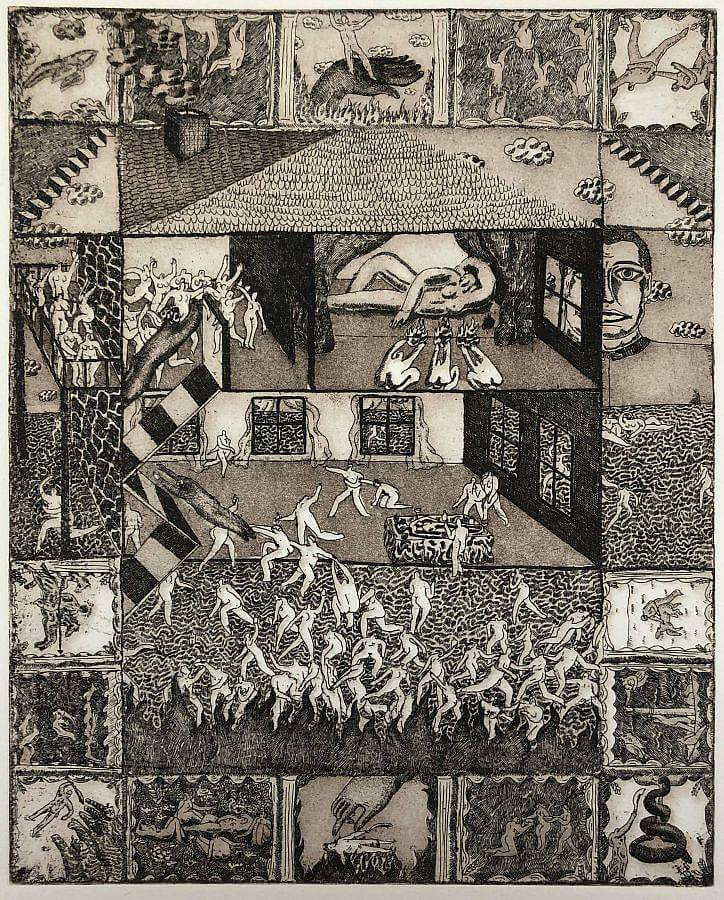
What do you want a viewer to walk away with after seeing your work?
That’s a tough one – I would be sad if everyone walked away with the same take. Recently, for Anty God [a book I made with Who Press’d Press], I asked the viewer to interpret the work as what we might look like to a giant kid playing with our globe, or what God might look like to an ant.
What is one of the bigger challenges you are struggling with as an artist, and how do you cope?
I’ve struggled most with time and resources. Regular access to a print shop or studio space has been financially challenging, so my studio is whatever corner of my apartment best suits the project I’m working on at the time. That being said, those restrictions can breed new avenues of making that otherwise wouldn’t have been realized. There are endless ways to connect to your practice, and for me, that curiosity is one of the most exciting aspects of being an artist. It can be how community is built— pulling resources, collaborating, asking for help, and always trying to learn. That’s the silver lining.
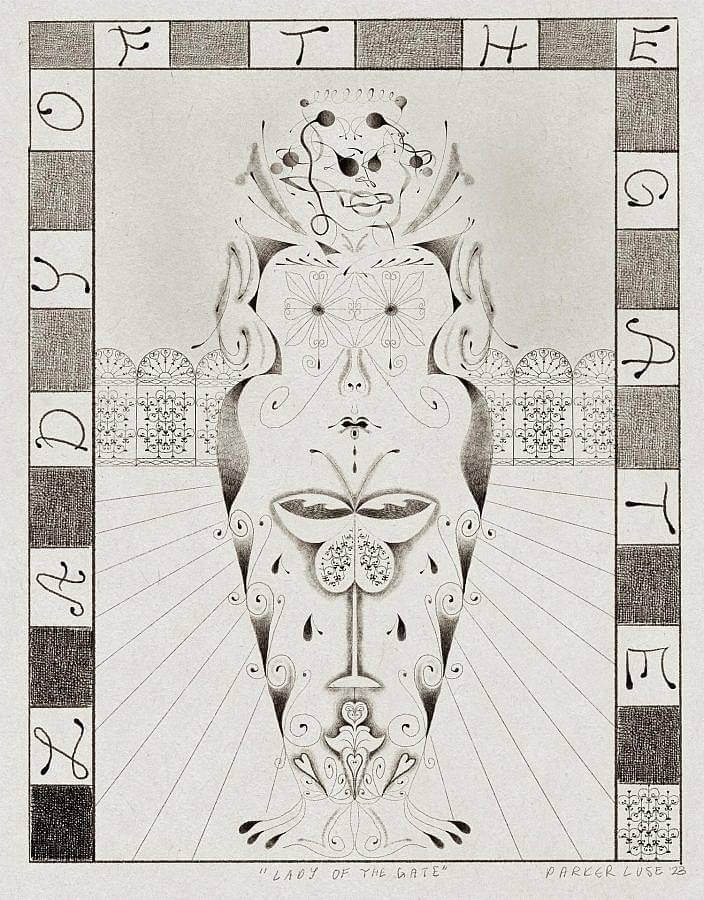
Any recent, upcoming, or current projects you are working on?
My most recent breakthrough was getting my hands on a CNC plotter that I’ve been using to make drawings and animations. It’s sort of a printmaker’s dream in the way the machine is processing your imagery and outputting it in its own unique hand. The animations have been particularly laborious but exciting— I start by doing them digitally, arranging the frames onto a single sheet, vectorizing the image to be plotted out, hand-colored, and scanned back into a program to ultimately animate. It’s sort of a dance, but experimenting with this method has been a really welcome departure from my usual process. I’ve started animating random letters with the intention of creating a moving alphabet.
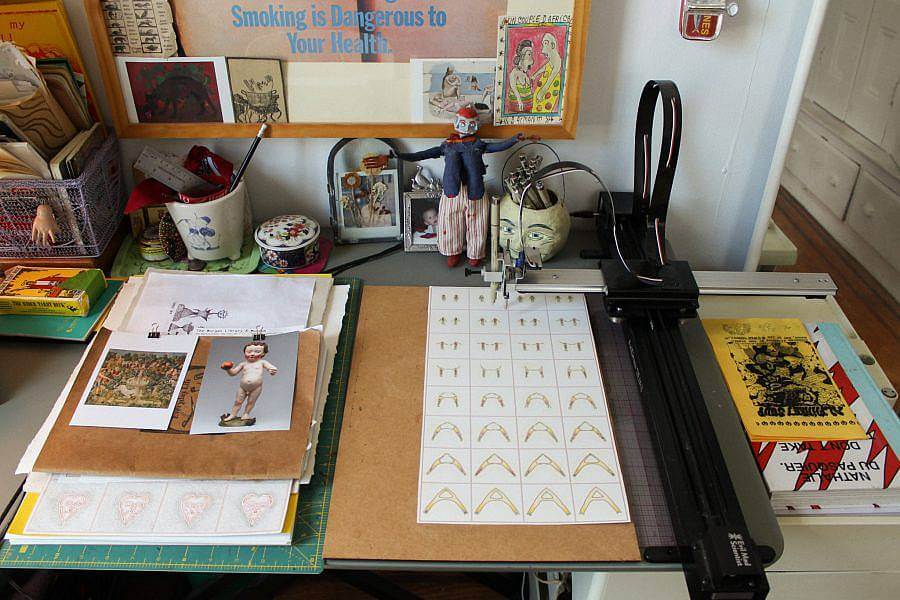
What have you been reading and listening to lately?
I just finished Kafka on the Shore by Murakami and restarted The Mushroom at the End of the World by Anna Tsing. As for music, making playlists is one of my most treasured pastimes! I made one called quitting, which really sets the mood for walking out on your crappy job. After you’ve quit, there’s a playlist waiting for you called stuy, which is perfect for aimless strolling. A lot of playlists and random videos I like are linked to images on the mainpage of my website.
What and who is influencing your work right now? Favorite Artists?
The artist collective PaJaMa, Gyula Hincz, Bernard Faucon, the Sims, any illuminated manuscript, Joseph Yoakum, and, as always, my friends and grandparents.
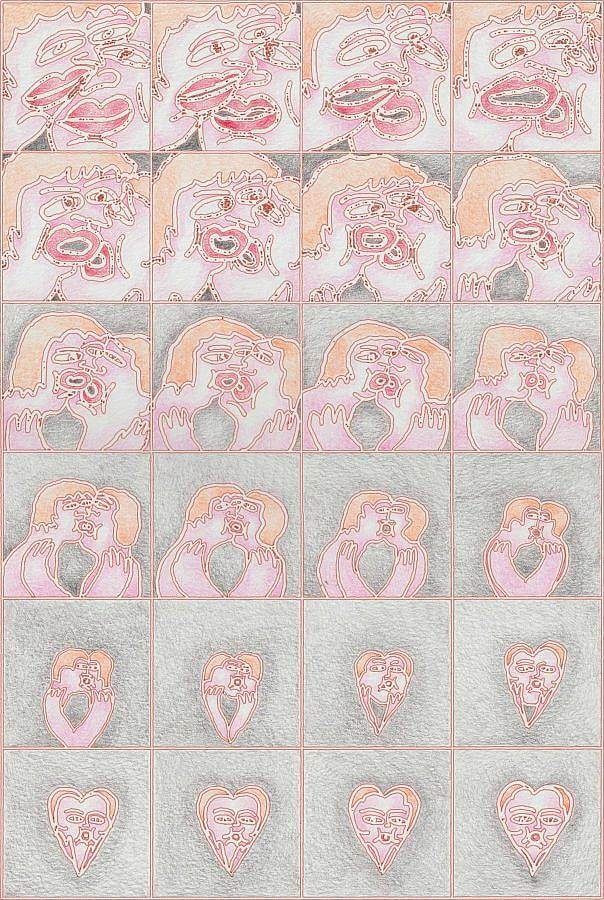
What’s your hottest take?
Making art isn’t always fun. For me, it feels obsessive a lot of the time. I met someone once who told me they had a dream that they died and described it as one long, interminable exhale. It really stuck with me. Sometimes I feel like my practice is one interminable breath— for it to be completely satisfying would mean that it would stop, but instead it just goes.
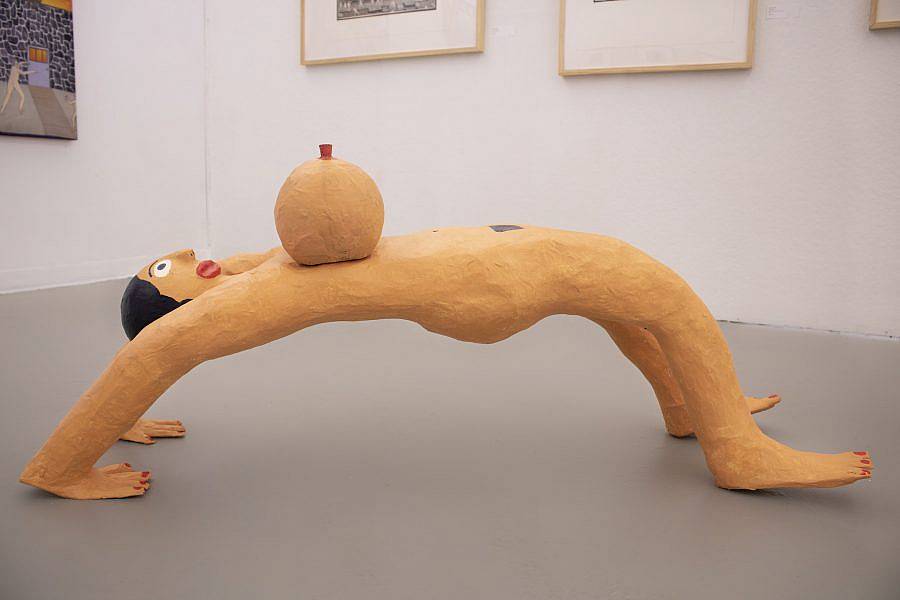
Favorite quotes/mantras?
The “Why Cheap Art Manifesto” by Peter Schumann/Bread and Puppet Press–I like to sing it.
What do you collect?
Recently I found a fossilized shark tooth and I’d really like to collect more.
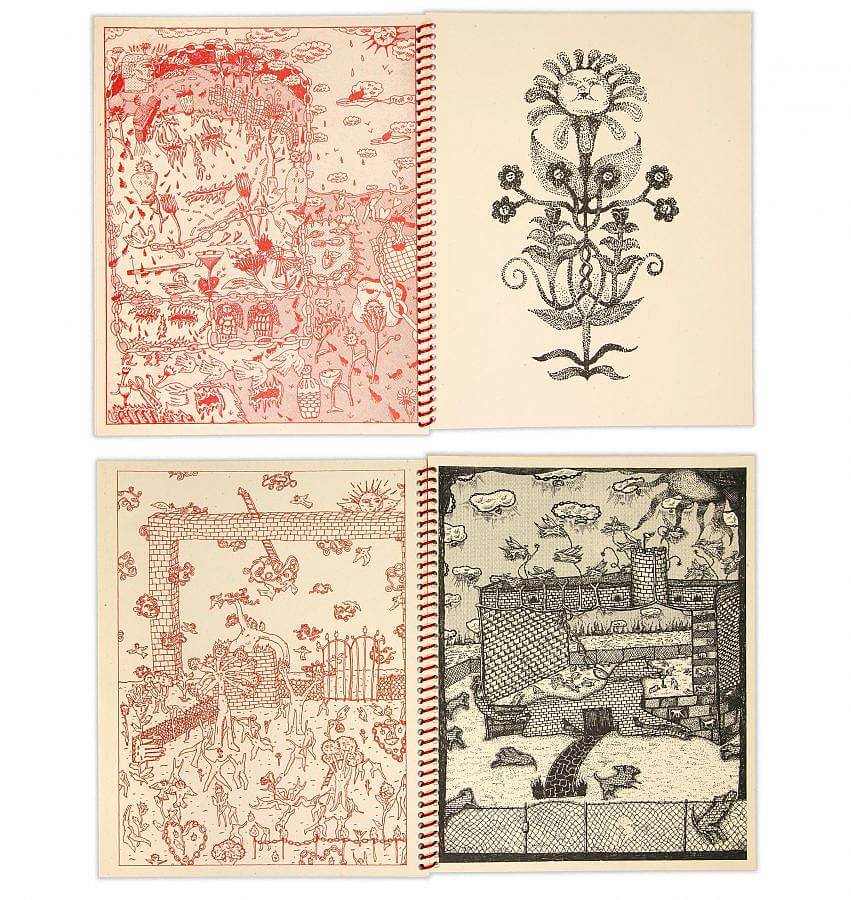
All images courtesy of the artist. Interview conducted and edited by Natalie Toth
